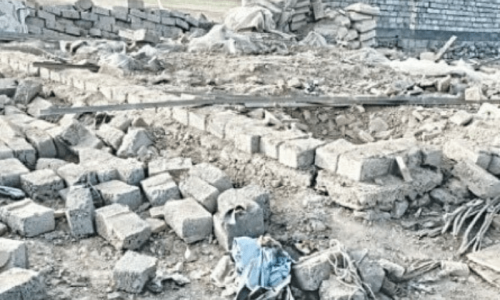PESHAWAR: Fazal Khaliq, a young journalist and cultural activist from Swat, has recently brought out an interesting book ‘The Uddiyana Kingdom: The Forgotten Holy Land of Swat’.
The publication is a result of three-month research fellowship, sponsored by Temasek Foundation, Singapore (TFS). Spread over 156 pages, the book is a kaleidoscopic account of the ancient Swat valley.
Dr Luca Maria Olievieri, the director of Italian Archaeological Mission (IAM), Pakistan ranks this title being modern, well-illustrated, informative and provocative on ancient Swat in the greater history of Eurasia. He says that the book offers new insights into the past glory of Uddiyana Kingdom.
Every single stone of Swat is a fascinating story in itself. Tall trees, fragrant flowers, snowcapped peaks, clear water rills, singing birds and joyful animals bespeak the enchanting beauty once home to perennial peace and tranquility. Today’s Swat, the ancient Uddiyana Kingdom, was the magnificent centre of Gandhara civilisation.
Book by young cultural activist offers new insights into the past glory of Uddiyana Kingdom
It was an important province of Persia during reign of King Darrius 1 (522 -486 BC) for 200 years till Alexander the Great conquered it in 327 BC. Mauryans dynasty recaptured Swat in 305 BC. It was followed by Parthian’s rule over the region some 55 years later while the western Hellenistic influence came with arrival of Indo-Greeks in around 180 BC.
Kuhsanas got control of Gandhara in first century AD and founded Kushan Empire comprising the present-day Pakistan, Iran, Kabul valley, Northern India and parts of Kashmir. Buddhism flourished when Kushan king Kanishka (127-150 AD) converted to it. From here, Buddhism travelled to China, Japan and beyond.
Swat served as one of the most significant centres of Gandhara civilisation since first century BC but according to scholars, Swat had nursed other civilisations too at the same time as Kanishka supported other religions as well.
Some researchers believe that Uddiyana (ancient Swat valley) was a separate kingdom. The Gandhara civilisation ran along the Indus River through Talia up to interior Sindh. The word ‘Gandhara’ in Sanskrit means fragrance because the valley was overgrown with plenty of flowers.
Kanishka’s greatest contribution to Buddhist architecture was the Kanishka Stupa at Peshawar. Archaeologists, who rediscovered the base of it in 1908-1909, ascertained that this stupa had a diameter of 286 feet (87 metres). It was covered with jewels.
Kanishka called the fourth Buddhist council in Peshawar in 78 AD. About 500 Buddhist monks, who attended the council, worked on preservation of oral traditions of Buddha. He fully patronised Gandhara culture.
The whole life cycle of Buddha was engraved in stone which still is available in Peshawar museum. The holy Buddhist scripture was also preserved. It lent a sanctified position to the region.
Xuanzang, celebrated Chinese traveller in 7th century AD, noted that at the time of his tour, there were some 1,000 Buddhist monasteries in Swat valley. Unfortunately, remains of a few of them could be seen here and there in Swat.
Swat has survived the plunder and brutality of militants but its bruised face demands revival, protection and reconnection with its bygone past. The book takes the readers back to Buddhist sites and monuments that used to stand in glory in its heydays. Peace and fragrance swayed the whole valley. Nature ruled with all its beauty and violence found no presence even in memory.
Serious efforts have not been undertaken to conserve and preserve the beauty of Swat. The deep insight of the young author compels readers to revisit the land of fairies, gifted with breathtaking beauty. He is also keen to inculcate sense of ownership among people to reclaim its glorious past and its promising future. He uses simple words to retell the story of the inevitable Swat.
The book covers important heritage sites and Buddhist stupas scattered over the valley. Though not an archaeologist, yet the author’s deep interest in the subject provides food for thought. His easy and fluent style grips attention of the reader. His main focus is on rediscovering exploring and taping the grandeur of Swat valley.
Tourism and cultural activities need to be launched once law and order is improved fully so that foreign tourists begin trickling to Swat. Socio-economic development of local residents is closely linked to boost of tourism.
“Swat is an amalgamation of natural beauty and cultural heritage. One does not need to be a scholar to enjoy it,” the author comments. The researchers and heritage lovers will take this title a spiritual journey back in time to experience ecstasy and satisfaction.
Published in Dawn, January 8th, 2015
On a mobile phone? Get the Dawn Mobile App: Apple Store | Google Play













































Dear visitor, the comments section is undergoing an overhaul and will return soon.